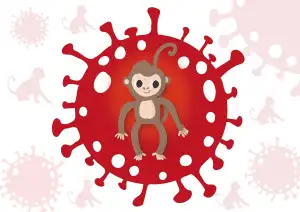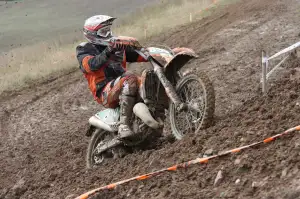Unleash Your Golf Swing: Discover the Key Muscles Engaged for Optimal Performance

- The Core Muscles: Engaging the Powerhouse of Your Swing
- The Upper Body Muscles: Building Strength and Control
- The Lower Body Muscles: Generating Stability and Power
- The Arm and Shoulder Muscles: Achieving Precision and Accuracy
- The Importance of Flexibility and Balance in Golf
- Tips for Strengthening and Stretching the Muscles Used in a Golf Swing
When it comes to mastering your golf swing, understanding the muscles involved is crucial. A golf swing requires a combination of power, control, and precision, all of which are dependent on the engagement of specific muscle groups. By knowing which muscles are key players in your swing, you can optimize your performance on the course. In this article, we will explore the core, upper body, lower body, and arm and shoulder muscles that contribute to a successful golf swing. Get ready to unleash your golf swing by discovering the key muscles engaged for optimal performance!
The Core Muscles: Engaging the Powerhouse of Your Swing
The core muscles play a crucial role in generating power and stability during a golf swing. These muscles include the abdominals, obliques, lower back, and glutes. Engaging these muscles properly can help you achieve a more powerful and controlled swing.
When you initiate your swing, your core muscles act as the foundation, providing stability and transferring energy from your lower body to your upper body. This transfer of energy is essential for generating clubhead speed and distance.
To engage your core muscles effectively, focus on maintaining proper posture throughout your swing. Keep your spine neutral and activate your abdominal muscles by drawing your navel towards your spine. This will help stabilize your torso and allow for a smoother rotation.
Incorporating exercises that target the core muscles into your training routine can greatly enhance your golf performance. Planks, Russian twists, and medicine ball rotations are all excellent exercises that strengthen the core and improve rotational power.
Remember, a strong core not only improves power but also helps prevent injuries by providing support to the spine. So don't neglect this powerhouse of muscle engagement when working on improving your golf swing.
The Upper Body Muscles: Building Strength and Control
The upper body muscles play a crucial role in building strength and control for a powerful golf swing. The chest muscles, such as the pectoralis major and minor, help stabilize the upper body and provide power during the downswing. The back muscles, including the latissimus dorsi and trapezius, are responsible for generating rotational force and maintaining posture throughout the swing. Additionally, the shoulder muscles, such as the deltoids and rotator cuff muscles, aid in controlling the club's movement and achieving accuracy. By focusing on strengthening these upper body muscles through targeted exercises like rows, presses, and lateral raises, golfers can enhance their swing mechanics and improve overall performance on the course.
The Lower Body Muscles: Generating Stability and Power
The lower body muscles play a crucial role in generating stability and power during a golf swing. The glutes, quadriceps, hamstrings, and calves work together to provide a solid foundation for your swing. The glutes, or buttocks muscles, help stabilize the hips and maintain balance throughout the swing. The quadriceps are responsible for extending the knee and generating power as you rotate your body. The hamstrings work in conjunction with the glutes to provide stability and control during the downswing. Finally, the calves contribute to maintaining balance and transferring power from the ground up through your body. By strengthening these lower body muscles through exercises such as squats, lunges, and calf raises, you can improve your stability and generate more power in your golf swing.
The Arm and Shoulder Muscles: Achieving Precision and Accuracy
The arm and shoulder muscles play a crucial role in achieving precision and accuracy in your golf swing. These muscles are responsible for controlling the movement of the club and ensuring proper alignment and follow-through.
The deltoids, located in the shoulders, are essential for generating power during the backswing and maintaining stability during the downswing. Strong deltoids allow for a smooth transition from backswing to downswing, resulting in a more controlled and accurate shot.
The biceps and triceps are also engaged during the golf swing. The biceps help control the speed of the clubhead, while the triceps assist in stabilizing the arms and maintaining control throughout the swing.
Additionally, the forearm muscles, such as the flexors and extensors, play a vital role in wrist action. These muscles contribute to clubface control, allowing for precise ball contact.
To optimize performance, it is important to strengthen these arm and shoulder muscles through targeted exercises such as dumbbell curls, overhead presses, and push-ups. Incorporating resistance training into your fitness routine can improve muscle endurance and overall control.
Remember to always warm up before engaging in any physical activity to prevent injury. Stretching exercises targeting these specific muscle groups can help improve flexibility and range of motion, allowing for a smoother swing motion.
By focusing on developing strength and control in your arm and shoulder muscles, you can enhance your precision and accuracy on the golf course. Practice regularly, maintain proper form, and pay attention to your body's signals to achieve optimal performance.
The Importance of Flexibility and Balance in Golf
Flexibility and balance are crucial components of a successful golf swing. A flexible body allows for a full range of motion, enabling you to generate power and achieve optimal clubhead speed. It also helps prevent injuries by reducing strain on muscles and joints. Additionally, balance is essential for stability throughout the swing, allowing you to maintain control and accuracy. Incorporating exercises that improve flexibility and balance into your training routine will greatly enhance your golf performance.
Tips for Strengthening and Stretching the Muscles Used in a Golf Swing
1. Incorporate resistance training: Include exercises like squats, lunges, and deadlifts to strengthen your lower body muscles. For the upper body, focus on exercises such as rows, pull-ups, and push-ups.
2. Engage in core workouts: Perform planks, Russian twists, and medicine ball rotations to target your core muscles. A strong core will provide stability and power during your swing.
3. Don't neglect flexibility exercises: Stretching is essential for maintaining a full range of motion in your muscles. Practice dynamic stretches before playing golf and static stretches after to improve flexibility.
4. Try yoga or Pilates: These practices can enhance both strength and flexibility while promoting better balance and body awareness.
5. Use resistance bands: Incorporate resistance bands into your warm-up routine to activate the key muscles used in a golf swing. This will help you develop muscle memory and improve overall performance.
6. Consider working with a trainer or coach: They can provide personalized guidance on specific exercises that target the muscles used in a golf swing.
Remember, consistency is key when it comes to strengthening and stretching these muscles. By incorporating these tips into your fitness routine, you'll be well on your way to optimizing your golf performance through muscle engagement.
In conclusion, understanding and engaging the key muscles used in a golf swing is essential for enhancing your performance on the course. By strengthening and stretching your core, upper body, lower body, and arm and shoulder muscles, you can improve your power, control, precision, and accuracy. Additionally, focusing on flexibility and balance will further enhance your swing mechanics. So, unleash your golf swing by prioritizing muscle engagement and elevate your game to new heights!
Published: 15. 01. 2024
Category: Health



